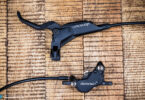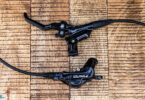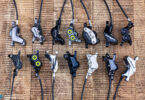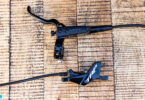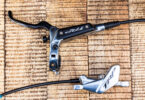Back Issue | Marin Attack Trail XT Pro Review

When you think of the original pioneers of our sport, the name Marin demands mention. It is pretty much agreed that Marin County, California was home to the first mountain bike race, Repack, held on the gravel service roads of Mount Tamalpais. In those exciting early days, Marin not only named bikes after trails on Tamalpais, it also made models to specifically meet the challenges of those trails, evolving with the sport as it grew.
However when the “freeride” movement came about, Marin seemed to lose its way a little! Despite having a rich heritage, the company struggled with its identity and seemed one step behind the industry. However, that all changed for Marin at Interbike 2013 when they released an exciting new line of bikes, mixing modern geometry with cutting edge components. Marin was back in the game!
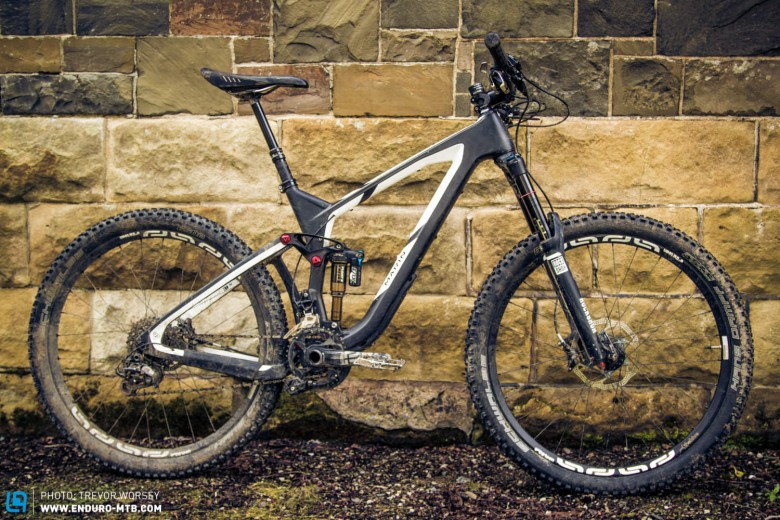
The £5000 Attack Trail XT Carbon Pro is the big, burly bike in the new line-up: with 27.5” wheels and 160/150mm of travel, it aims itself firmly at the big hitting trail/enduro sector. There are three models of Attack Trail bikes in the line-up ‒ the aluminium rear XT8, and full carbon XT9 and Pro which we received for testing. The previous generation of Marin’s used the distinctive quad link suspension platform that went against the styling trend at the time. Many agreed that the ride was good, but not everyone was convinced by the looks. Marin has now returned to the more conventional two-triangle silhouette and has produced an attractive frame; with a futuristic sculpted carbon downtube and smooth, clean lines, it is very appealing in the flesh.
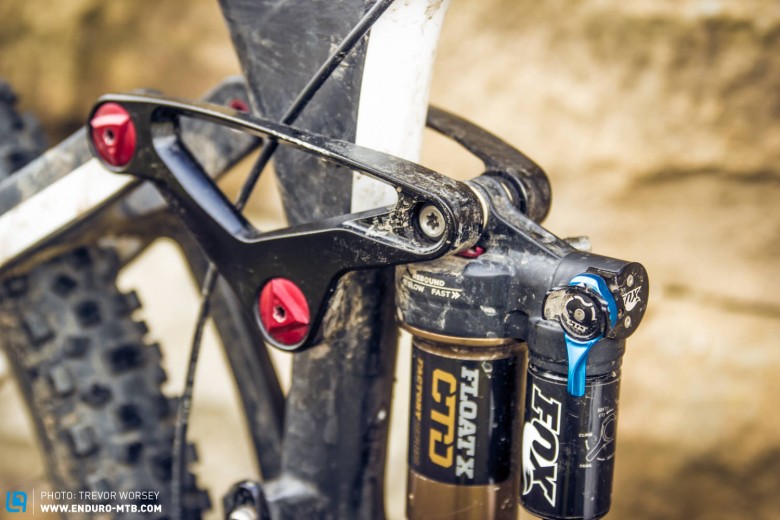
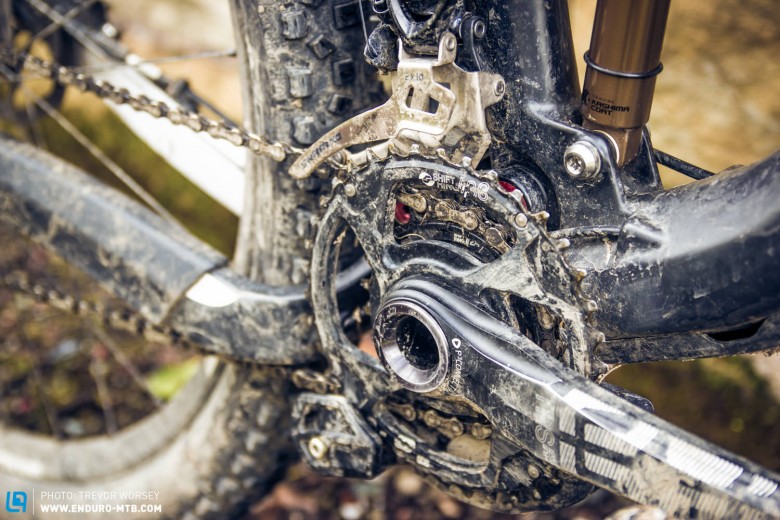
At the heart of the Attack Trail is the brand new frame, incorporating the new QUAD-Link-3 suspension design, with a dual link, floating pivot point system. Manufactured from CXR 60T carbon, the substantial tubing diameter and beefy headtube and BB junction add up to a frame with massive stiffness. The rear suspension is driven by two cold-forged CNC links, allowing Marin to fine-tune the axle path.
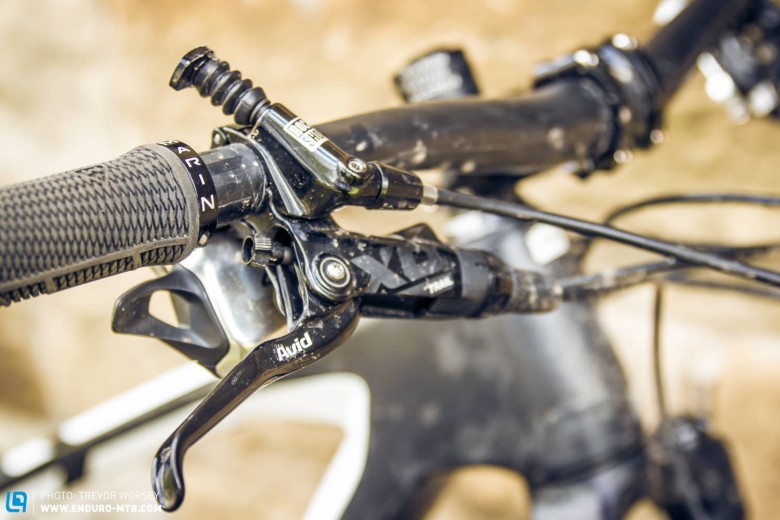
Marin have made some great componentry choices, the Pike fork is the perfect choice for a bike with big ideas such as this, unusually paired with the Fox Float X, you have a class-leading suspension platform. The internally routed Reverb Stealth seatpost is essential at this price point, and it is good to see an eThirteen TRS wheelset, adding a bit of class and an angry sounding freehub buzz. There are a few areas where we think the spec could be improved; for example, the 711mm Easton Haven bar is well shaped, but too narrow for a bike with such aspirations (the 750mm Havoc would have been a better choice and indeed is specified on the the new £4500 XT9 coming in 2015). It is also a shame that despite specifying the Mount Vision with a 1×11 setup, the Attack Trail has retained an e*thirteen TSRr double crankset (again addressed on the 2015 bikes that comes with SRAM XO1) ‒ it would have been a big plus to see a single-ring setup. SRAM X0 takes care of the shifting with no complaints, and Avid XO Trail brakes handle the deceleration.
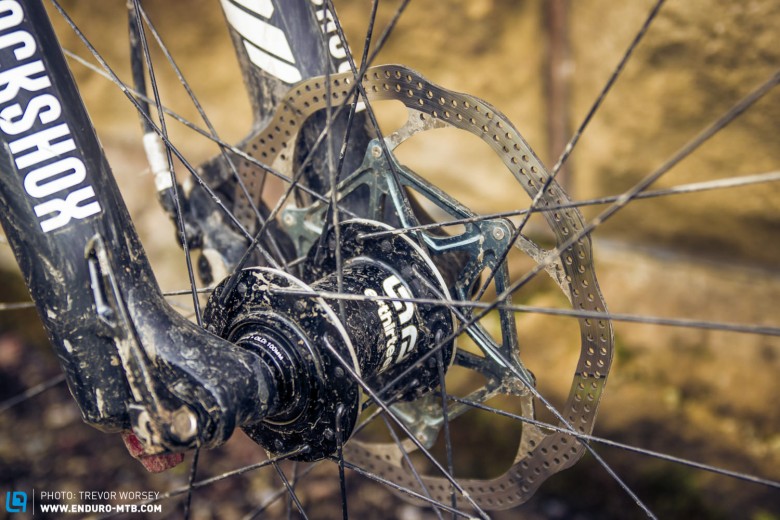
With a set of pedals fitted, the bike weighed in at 13.1kg (28.8lbs) which is very respectable for a 160mm bike, not the lightest, but also not a tank. At 180cm, I normally sit between Medium and Large in the frame sizes and think that Marin has undersized their bikes! The supplied Medium was very short for me and I would certainly look to up-size to a Large. It felt far more compact than its advertised 591mm top tube (effective) would indicate, so if you want to run a shorter stem you need to size up. I found the position a bit more upright and ‘long ride’ rather than stretched out ‘race’ mode, though admittedly the bike was very comfortable over long rides!
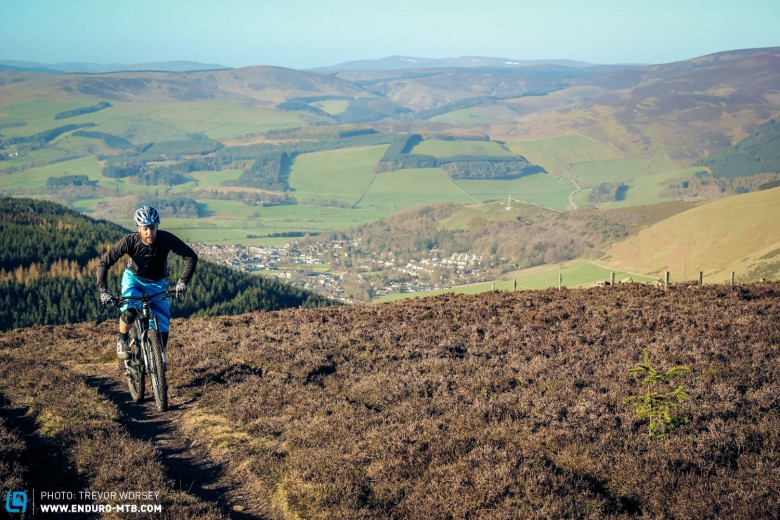
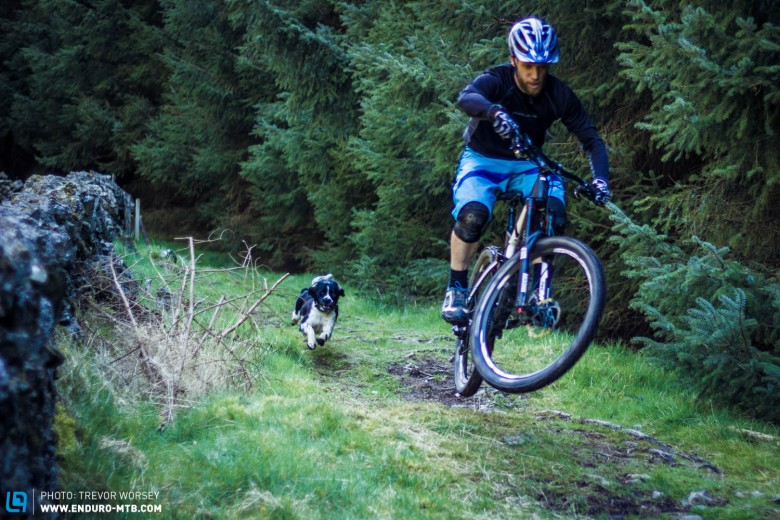
Right from the start I was very impressed with the Marin’s climbing ability. The stiff and stout rear end efficiently converts pedal power into forward momentum, and the lightweight frame is easy to drive up technical climbs. The Quad-Link-3 suspension platform provides lots of traction from the rear, allowing you to feel lots of feedback from the ground and explore the limits of grip. Even with the aggressive 66.5 degree head angle, the front end does not wander significantly.
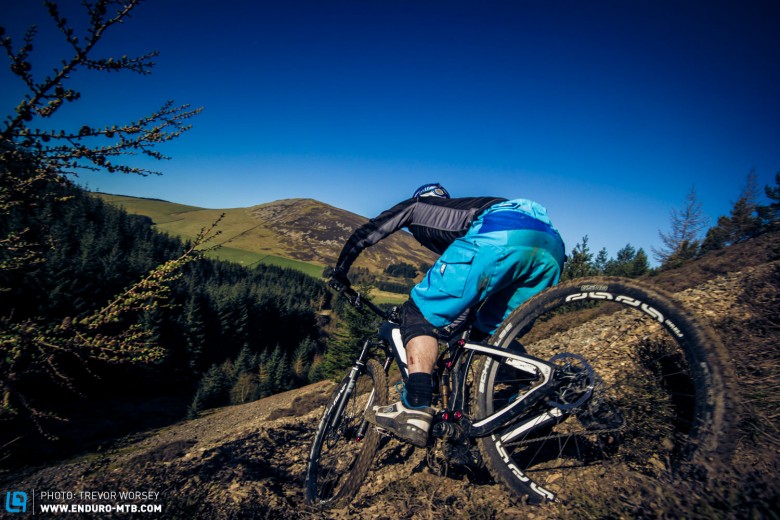
When you point the bike downhill the Marin is a very smooth operator, and the bike has a nice balance. The Avid XO brakes work well and provide smooth and efficient braking, and the Hans Dampf tyres are predictable and very effective. At the limit, on very steep and technical trails, when compared to other bikes in its category the bike feels like it is out of its depth when pushing really hard; the narrow bars and tall position makes it hard to fully exploit the grip in turns, but is a strong performer on flowing trails and is more suited to a smooth rider. After riding many 11 speed bikes, the increased noise and chatter from the double ring drivetrain was annoying. I would be happy to lose some extreme climbing ability to take advantage of the benefits of a simpler drivetrain! The stiff and compact rear end helps the bike track well through the corners, however the narrow bars and long stem stop you from unlocking the bike’s potential when carving through turns. This is not a bike you can hang off the back of, you need to follow good lines and skip the bike down the trail.
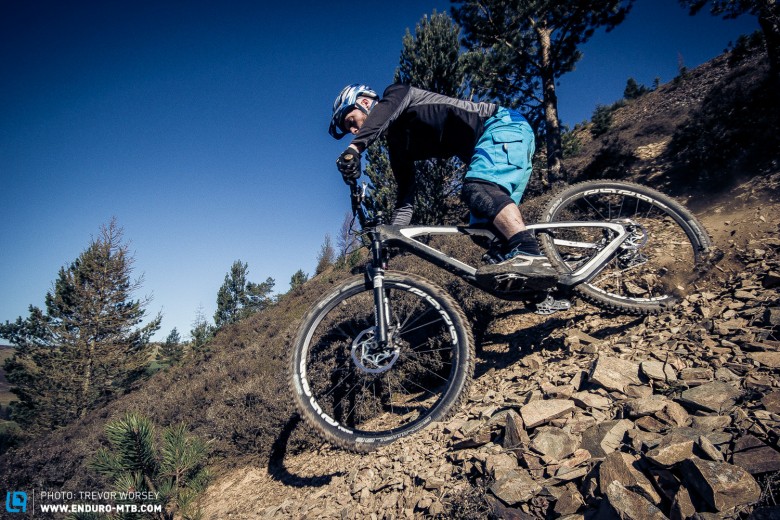
Bottom Line
The Attack Trail is no plough bike, and rewards finesse and smooth riding when the going gets really rough. Some wider bars and a shorter stem (on the large for me) would be first on my list. We also found the Float X rebound adjuster is inaccessible and hidden under the linkage; you can poke it round with an allen key, but it does make setup more complicated (Marin have addressed this for 2015, fitting a Monarch Plus RC3 with accessible rebound control). However, the Pike and Float X combination is as good as it gets in the current market, and really makes the most of the Attack Trail’s stiff chassis. The Attack Trail lacks the uncompromisingly aggressive position found on a pure bred race bike, but that will be a good thing for many! It is a little more comfortable, and is ready to take on long days in the saddle over tough all-mountain terrain. If your heart lies in epic adventures, and you are looking for a bike to take you high in to the mountains, while giving you smile all the way down, the Attack Trail is well worth a test. If you are looking for a long and low race bike, there are other bikes in the category that are more suitable.
Words and photos: Trev Worsey
Did you enjoy this article? If so, we would be stoked if you decide to support us with a monthly contribution. By becoming a supporter of ENDURO, you will help secure a sustainable future for high-quality mountain bike journalism. Click here to learn more.


